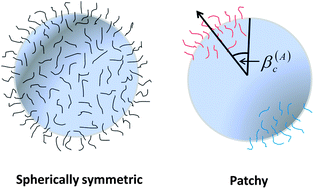Thermodynamic perturbation theory for self assembling mixtures of multi-patch colloids and colloids with spherically symmetric attractions
Abstract
In this paper we extend our previous theory [B. D. Marshall and W.G. Chapman, J. Chem. Phys., 2013, 139, 104904] for mixtures of single patch colloids (p colloids) and colloids with spherically symmetric attractions (s colloids) to the case that the p colloids can have multiple patches. The theory is then applied to the case of a binary mixture of bi-functional p colloids which have an A and B type patch and s colloids which are not attracted to other s colloids and are attracted to only patch A on the p colloids. This mixture reversibly self assembles into both colloidal star molecules, where the s colloid is the articulation segment and the p colloids form the arms, and free chains composed of only p colloids. It is shown that temperature, density, composition and relative attractive strengths can all be varied to manipulate the number of arms per colloidal star molecule, average arm length and the fraction of chains (free chains + arms) which are star arms.


 Please wait while we load your content...
Please wait while we load your content...